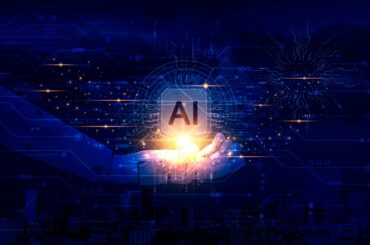
GenAI innovation is being driven by developers. And they are in such a position because of the emergence of Retrieval Augmented Generation (RAG) and of open-source models.
GenAI is unleashing a Cambrian Explosion of new technologies that may be unparalleled from previous tech eras: more than 360 GenAI-centric startups created since Dec 2022. Yet whether the internet in 1999, the cloud’s emergence in 2006, mobile computing in 2007, or the AI boom in the late 80s, all of these tech eras followed a similar pattern. Each began with a big bang proliferation of new, fresh, and quickly evolving programming languages, tooling, standards, software, and hardware. Massive communities of builders rapidly experimented and dissected, tried new approaches, and threw others away, building out a massive marketplace of ideas and implementations based on what was possible.
Take coding languages as one example. Wikipedia lists more than 700 of them in current or historical use. Most of these languages were created during the start of each big tech era, evolving and competing until developers settled on the few that won – whether SQL for database languages, and Javascript for the Internet. There are already 16 AI programming languages, and we’re still in the early days of AI.
GenAI is still experimental because it should be. OpenAI launched ChatGPT barely 18 months ago. The pace of adoption is also faster than that from previous eras: 1 out of 3 companies are already using GenAI in at least one business function. Yet what’s different with GenAI now versus previous eras is the role of the developer as part of this experiment phase.
During the AI boom, developers played an important but supporting role in shaping its path. GenAI’s future, by contrast, is putting developers at the center of this new era. It’s a seismic shift, and it’s happening now. CIOs need to understand what it means and what they should do about it.
See also: Deriving Layers of Value from GenAI Applications
GenAI visionaries are technical by necessity
Many innovations are vision-driven. Apple founder Steve Jobs had a clear top-down vision and commanded distributed teams within Apple to make it happen. This way of innovating continues with Tim Cook, who, in Apple’s recent earnings call, teased up its own GenAI efforts for later this year.
Yet innovation can also drive vision when developers are involved. LangChain began in 2022 as an open-source project by Harrison Chase while he was CEO of Robust Intelligence. The project underwent rapid change from its inception as hundreds of developers contributed to LangChain’s improvements. From it emerged LangChain Expression Language, an easy declarative way to streamline text processing and interaction with LLMs. LangChain was officially incorporated as a company in Jan 2023. Today, it empowers data engineers with a comprehensive set of tools for using LLMs in different applications. LangChain’s vision – to simplify the creation and production of LLM applications – came out of these innovations. Developers continue to experiment and feed more changes into the system.
Many horizontal technologies often grow this way. Their power comes by putting them in the hands of those who can explore and discover their possibilities. Yet GenAI stands out because it is both deeply technical and rapidly evolving. Builders must be deeply technical by necessity to unlock their potential. We can dream about GenAI’s possibilities, but making them happen requires an understanding of what’s actually possible and why.
See also: Beyond Buzzwords: A Deeper Look into GenAI
GenAI game changers: Retrieval Augmented Generation and Open Source models
The second reason why GenAI innovation is now being driven by developers is because of the emergence of Retrieval Augmented Generation (RAG) and of open-source models.
Large language models (LLMs) are nearly useless for most enterprise use cases without RAG. RAG is a process that retrieves data from external sources of knowledge to improve the quality of responses. This technique makes the LLMs that power ChatGPT, Google Gemini, and other chatbots more accurate, reliable, and up-to-date for tasks involving an organization’s own data. RAG has become the killer enterprise use case for GenAI because it gives LLMs a pragmatic way to access enterprise data. That’s huge.
RAG achieves something even bigger. It enables developers to treat LLMs as one (or, more commonly, more than one) part in a larger GenAI pipeline that builders can talk to and wire together. GenAI technology may be new, but its components-based approach is something developers intuitively understand more than anyone.
The rise of open-source GenAI models is similarly empowering developers. They further invite the possibility of breaking up GenAI problems into component parts for better and cheaper problem-solving, where each model can play a specific role inside larger sets of activities. Developers, as just one example, are already using one model to help write code and another model to help write tests for training GenAI systems. And they’re only just getting started.
Developers number in the millions…and are growing
The final reason lies in the sheer number of developers. AI’s early drivers were enterprise researchers and data scientists, who number in the thousands. Developers, however, number in the millions – 28.7 million of them, in fact, and growing by millions each year. It’s no coincidence that more top-performing CEOs have engineering degrees than MBAs.
That’s not to deny the importance of automation. Tools like GitHub Copilot and Amazon CodeWhisperer are already increasing, as are the growing wave of software development automation startups such as Laredo and Refact. Developers themselves acknowledge the changes occurring in their profession: 82% of them in a recent HackerRank poll believe that AI will redefine the future of coding and software development. It’s worth noting that, in the end, the ones doing the redefining will be the developers.
Developers are vital barometers for GenAI’s technical viability and value within their organizations. GenAI is also expensive now and will be for a while – but its costs are already starting to drop. For example, the rise of smaller models specialized for specific tasks and domains is beginning to lower barriers to access for countless organizations seeking to tap its potential. The result is creating more developers, not less. The US Bureau of Labor agrees: it predicts that developer-driven jobs will grow by 25% through 2032, much faster than the average for all other occupations.
What can IT leaders do?
1) Build in time for developers to experiment, even if it’s 10% of their workday, given the experimental stage that GenAI is at now. Developers need to get comfortable seeing what they can and can’t do. Innovation can’t happen without experimentation. We co-created a pre-built GenAI stack with Docker, LangChain, and Ollama specifically for this purpose. It’s just one of many great tools out there to try.
Developers also need frameworks that remove creativity barriers to safe and responsible experimentation. These frameworks should include clear policies, easy access to the latest tech and tools, and data privacy and security guardrails. At Neo4j, we allocate time for side projects, dedicated lab days, and meet-ups so that engineers can play with new things in different ways, all within committed budgets and time frames. Magic can’t happen without curiosity.
2) Bridge and align developers to GenAI goals, objectives, and competencies. Building a GenAI application is one thing. Ensuring its accuracy, transparency, and explainability is another. CIOs need to architect and scale with these must-have goals in mind. Knowledge graphs have emerged as an essential component for GenAI, grounding LLMs in facts while preventing hallucinations. CIOs will want to align with developers on these and other capabilities that experts such as Deloitte Consulting and Gartner cite as vital for GenAI adoption.
EY suggests that leaders should also consider prioritizing small strategic initiatives that link separate or independent teams in ways for multiple uncertainties or constraints to be addressed at the same time. The result can help bridge the gap between a company’s current state and its desired future state. Leaders assessing where to act now vs what to decide later can also test decisions with developers, validating executive decisions with frontline input.
3) Focus on the developer experience, not just developer productivity. A multinational with 30,000 developers using software costing $9.99 per month per developer is right to seek efficiency gains. However, a company with ten developers is far better off focusing on initiatives that involve their own top line as opposed to the bottom. Developers do far more than write software. They tear it apart. They diagnose, debug, and fix it. They make software do what humans want and need them to do, unlike even the best automation tools.
CIOs have the opportunity to prioritize efficiencies with GenAI and build innovations that increase the top line. Bottom-line efficiencies are important, can present low-hanging fruit, and have employees as end users or in the loop to represent a safe zone in which to experiment. That said, the ultimate winners will be those who find opportunities to use top-line innovation to win using GenAI. Just ask any of the world’s most valuable companies today.
See also: 10 Executives on Why and How GenAI is Here to Stay
A final word on GenAI
Developers are essential builders and important partners in the GenAI journey. They drive GenAI’s advances, create new solutions, and sit at the forefront of its responsible and ethical development. The opportunity is enormous. CIOs should take note!





























